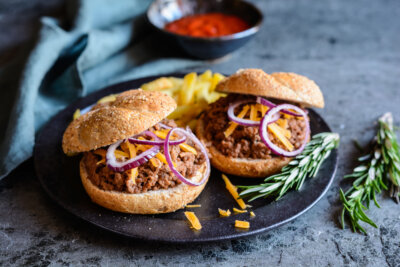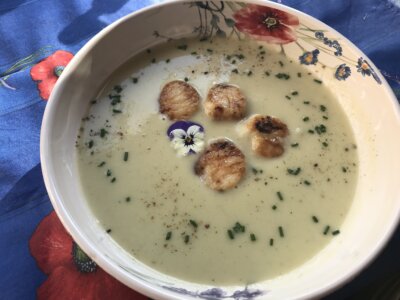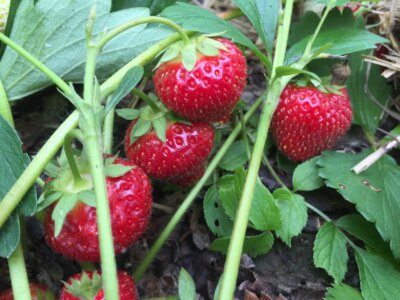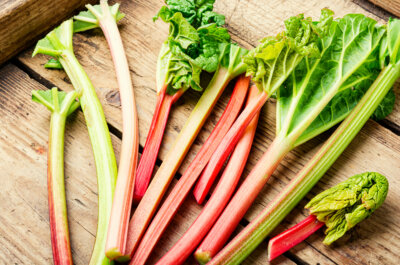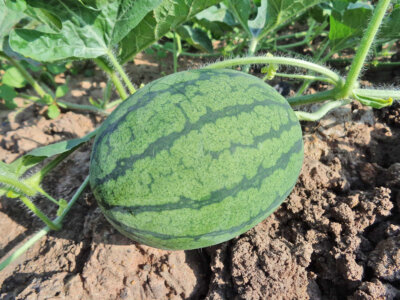Keep herbs close and diverse
Through the years I’ve always placed my herb garden as near to the kitchen door as possible. If it isn’t close you won’t tend to use what you’ve lovingly grown.
This year, my usual spot was being repaired as it was atop a stone wall. So, I planted my new herbs in pots with friable and nutritious soil. The idea was to move them back to their homesite when repairs were finished.
Well, they are growing so well I am reluctant to mess things up. So, by the front door they will remain for now.
Some of my established plants got destroyed in the repair so most are new this season. I grow perennial and annual herbs and find lots of uses for both. The perennials are tarragon, sage, thyme, oregano, sweet woodruff, rosemary, spearmint, winter savory and chives. As for annuals, I have basil (a must have), flat-leaved parsley, chervil, dill and summer savory. Notice no cilantro in the mix, but it’s easy to grow.
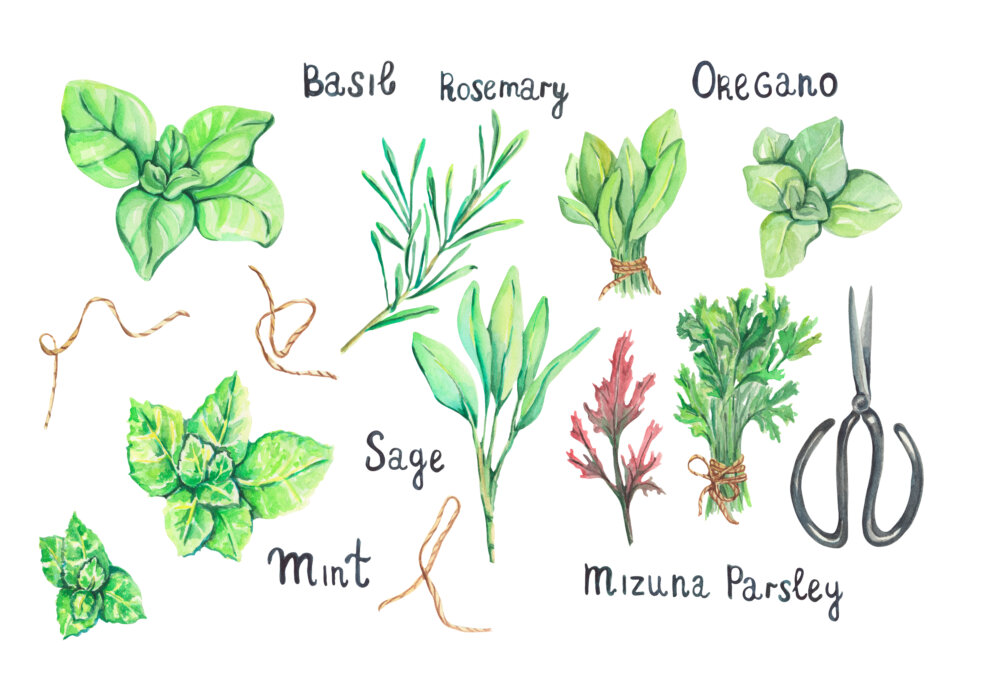 Within these species there are further definitions such as German thyme or curly parsley. Many sorts of mint are available. The best local spot to purchase ready-made plants is Red Wagon Plants just over the line in Hinesburg. Julie Rubaud began her nursery career specializing in herbs. Other local nurseries have herb starts as well.
Within these species there are further definitions such as German thyme or curly parsley. Many sorts of mint are available. The best local spot to purchase ready-made plants is Red Wagon Plants just over the line in Hinesburg. Julie Rubaud began her nursery career specializing in herbs. Other local nurseries have herb starts as well.
The annual herbs are the best bet for those who like to start with seeds. I have always found that perennial herbs are more apt to thrive here if you begin with starts in pots. They take a long time to become transplantable and summer moves quickly by. All the perennials will overwinter outdoors, except rosemary which needs to be dug and brought inside.
Think a Mediterranean atmosphere — so a warm but humid environment. The air must be humid not the soil. This is best achieved by setting your pot on pebbles in its saucer and adding water often to the dish. An occasional watering of the plant is necessary too.
Most of the Mediterranean herbs go for lean soil, that is not loaded with nutrients. Herbs such as thyme, rosemary and oregano grow like this. Because we mostly use the leaves for cooking, here it is wise to have a nitrogen-rich fertilizer if you use any. Basil should have any clusters of nascent flowers pinched out as soon as visible. Once basil flowers, the plant’s job is done and it begins to fade.
The early freshest leaves are usually the most aromatic on all herbs so keep snipping your plants and using the fragrant leaves for seasoning.
If you are blessed with a plethora of herbs, think of ways to preserve them. Some can be dried but I prefer chopping and freezing in bags or containers. I make an exception for sage and dry it in bundles.
Another way to save the fragrance is to make herb salts, with combined herbs or a single variety. Chop your herb of choice finely and mix into a container of plenty of salt. The salt will dry the herbs and preserve them.
Another delicious way to save summer’s seasoning is to make compound butter. Again, with one herb or a mix of your favorites. Add finely chopped herbs and stir into room temperature butter. Roll into a log shape and wrap tightly in waxed paper or parchment. Add one more layer of protection such as a zip-bag to prevent freezer burn and picking up odors. Freeze for later use by cutting off as much as you need for your recipe.
Herbal vinegars are a simple and safe way to preserve your bounty. Tarragon makes a wonderful fragrant blend for salads. I also like chive or mint vinegar. Simply stuff the bruised leaves into a bottle with white wine vinegar.
Speaking of mint, making a simple syrup with the leaves and storing in the refrigerator gives you a useful addition to fruit salad, iced tea or cocktails. I have found the way to extract the most flavor for mint is to make the simple syrup first, turn off heat and add plenty of chopped or bruised leaves as it cools. Later strain the concoction and bottle it. Store in the refrigerator.
For those trying to cut back on sodium, herbs are the answer to up the flavors of your dish. Experiment. Even something simple like a pasta sauce, noodle casseroles, potato dishes benefit from the addition of fresh herbs.
A roast chicken moves up to gourmet status with rosemary sprigs snuggled under the skin or placed in the cavity with a cut lemon and garlic. Roasted lamb just calls for rosemary in my book.
Here’s my riff on Julia Child’s herb-stuffed lamb:
Roast lamb with herb stuffing
One boneless leg of lamb
3 tablespoons finely chopped garlic
2 tablespoons finely chopped rosemary
2 tablespoons chopped chives
1/2 cup finely chopped parsley
Salt and pepper to taste
Cut the lamb roast down one side to lay flat unless the butcher has done this already. Liberally season with salt and pepper.
In a small bowl mix the chopped herbs and garlic and spread over opened meat. Roll the roast and secure with butcher’s twine. Rub the surface with extra virgin olive oil.
Place in an oiled baking pan and roast for about 20 minutes per pound at 350 degrees. Cook more or less depending on your likes.
The amounts of stuffing herbs can also vary to your liking and other favorites substituted as well. I have done this in advance because of scheduling and found the flavors permeated the roast even better. Store in the refrigerator if you do. This has become our Easter dinner favorite.
Boursin
One 8-ounce block of cream cheese
Mix of finely chopped fresh herbs such as dill, sage, thyme, savory (about 2 tablespoons)
One large clove of garlic finely minced or pressed
Bring the cheese to room temperature and mix the herbs and garlic in with a fork. Set in the refrigerator in a covered container to bring out the flavors. This is useful for snacking on crackers or celery sticks. Use in place of mayo on a tomato or cucumber sandwich. Add to steamed vegetables in place of butter.
Sweet basil pesto
2 cups fresh basil leaves
2 large cloves garlic
2 tablespoons pine nuts (or walnuts)
3 tablespoons grated parmesan or pecorino cheese
Extra virgin olive oil as needed (about 1/2 cup)
In food processor or blender, puree basil, nuts and garlic. Slowly add oil until desired consistency is reached. Should be thick but smooth. Don’t over blend as oil will take on a harsh flavor. Stir in cheese. Place in storage containers and freeze.
I like tarragon with fish and egg dishes. It is delicately flavored and has a somewhat anise-like taste.
Basil is a basic for me and many containers of pesto are stored for future sauces. Pesto can be a sauce unto itself or added to tomato or other pasta sauces. It’s a fine addition to ratatouille, minestrone and diluted with olive oil as a salad dressing. Great on caprese salad.
Store in the freezer in small containers. Using a sturdy knife chip off the amount you’ll need; or some cooks store as cubes using an ice cube tray to form the cubes.
Extending the flavors of summer is the goal here. I hope you’ll experiment with your lovely garden produce.
Keep them handy, but I fear the windowsill method rarely works well. I have used the aero garden and found that a good off-season method for growing but it’s small scale so preserving is best.
Here’s to a delicious summer.
Related Stories
Popular Stories
If you enjoy The Charlotte News, please consider making a donation. Your gift will help us produce more stories like this. The majority of our budget comes from charitable contributions. Your gift helps sustain The Charlotte News, keeping it a free service for everyone in town. Thank you.
Andrew Zehner, Board Chair



